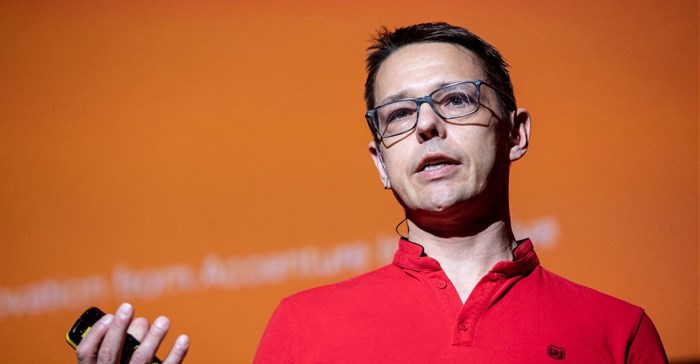#DesignIndaba2019: Olof Schybergson on embracing frustration and hope

Elements of design
Schybergson explains three core ingredients of design:
- The human
- Technology
- The organisation
He says that design has always been about people and technology, and the Industrial Age made technological development possible in the organisation.
Part of the fun of design, Schybergson says, is the fact that people are mysterious, noting how time and money previously used for certain activities are being replaced by others as technology evolves.
Then comes the question: Will there be jobs for humans in the future? Schybergson says that globally there is no shortage of jobs, so the answer is emphatically yes. The key is for designers to continue to design for efficiency and uniformity.
Reverse trends and evolving technology
According to Schybergson, we are seeing the reversal of a trend in the design and technological spheres, with capital being superseded by creativity and the ability to innovate, and therefore human talent, as the most important factors of production.
“If talent is becoming the decisive competitive factor, we can be confident that capitalism is being replaced by ‘talentism’,” he says.
"Design has been central to the creation of culture and society" @olof_s #designindaba
— Design Indaba (@designindaba) March 1, 2019
Schybergson also explains that the cost of technology is plummeting, which means that with little effort and little cost, you can do and design extraordinary things.
He notes that while humans aren’t prone to change quickly, technology does.
Are creatives having a good time?
Schybergson says that big business love creatives, as they are currently raking in the profits as a result of creative ideas and designs. This must mean that the creative industry is doing something right, right?
In global terms, yes, and yet he is still concerned about what he calls ‘the sea of sameness’, using chicken nuggets as an example saying that despite the beauty and colour of the chicken, the nugget remains dull and dreary. He went on to say that the same is true for today’s websites, icons and logos that all seem to follow the same design style and appeal.
He emphasised his concept by quoting Alexey Brodovitch:
This disease of our age is boredom… The way to combat this is by invention – by surprise. When I say a good picture has surprise value, I mean that it stimulates my thinking and intrigues me.We waste a lot of time in tech, according to Schybergson, and we get frustrated because of it. He describes the amount of fragmentation and clutter we experience through technology and how this adds to the frustration when it could be a lot more streamlined.
Enter the future designer
The future designer will go from designing for the individual to design for the organisation and will be dealing with more and more complexity, according to Schybergson. They will go from designing for thousands to designing for billions while also creating individual, tailored solutions at scale, offer a fusion of digital and physical experiences.
He pointed out that there will be a huge workforce coming from Africa and SA in the coming decades.
Quoting Nicholas Negroponte,
Where do new ideas come from? The answer is simple: differences. Creativity comes from unlikely juxtapositions.He says new designers need to ask the right questions to succeed. And they are doing just that, according to Schybergson, who says new designers are harnessing technology for the benefit of humans with an example of how combining human and AI cancer testing has a far lower error rate (0,5%), as opposed to only human testing (3,5%) and only AI testing (7%).
Use frustration as inspiration
He ended off by saying that design will continue to be a dream domain, and offered these three tips for designers and creatives:
- Be unhappy in order to be happy – Use frustration as moments to realise something needs to be improved. He quotes Andy Grove here: “Complacency breeds failure.”
- Be comfortable with discomfort – Be curious, explore and collaborate.
- Be the hope, not the fear – Embrace hope, not fear, to go further and change the world in a positive way!
For more:
www.designindaba.com















